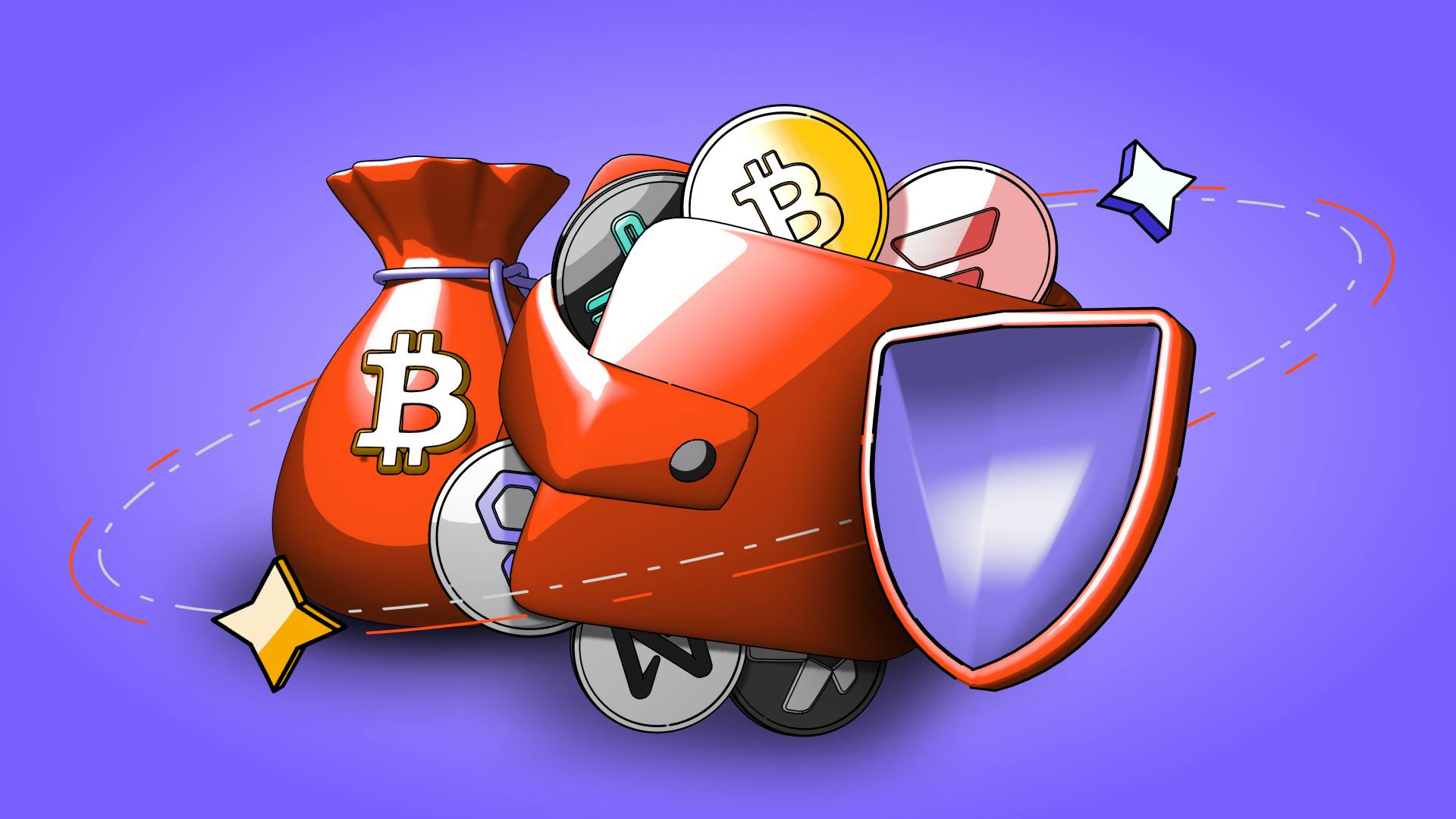Ultimate Guide to Digital Asset Custody: Safeguarding Your Digital Wealth
December 5, 2025

by Coinmetro Editorial Team
December 5, 2025
Digital asset custody refers to the secure management and storage of digital assets such as cryptocurrencies, tokens, NFTs, and other forms of digital wealth. In the realms of blockchain and cryptocurrency, where transactions are irreversible and assets are highly susceptible to online threats, the role of digital custody becomes fundamentally critical.
The significance of digital asset custody lies in its ability to provide security and assurance for asset holders. As the blockchain space evolves, the volume of digital wealth managed and transacted has skyrocketed, bringing with it an increased risk of theft, hacking, and loss. Unlike traditional banking or physical assets, there is no central authority to turn to in case of lost funds or compromised data. Therefore, the responsibility of safeguarding digital assets falls squarely on the individual owners or the entities that manage these assets on their behalf. This underscores the importance of employing robust custody solutions that not only secure assets against external threats but also provide clear mechanisms for asset recovery and access in the event of unforeseen circumstances.
The rise of institutional investment in cryptocurrencies has further amplified the need for sophisticated digital asset custody services. Institutional investors, bound by regulatory and fiduciary obligations, require custody solutions that offer not only high security but also compliance with regulatory standards. This demand has led to the development of a range of custody services, from self-custody wallets to third-party custody providers, each offering different levels of security, control, and convenience.
Let’s explore the various aspects of digital asset custody, including types of custody solutions, key considerations for choosing a custody provider, and best practices for safeguarding your digital wealth. Whether you are an individual investor, a business, or an institutional entity, understanding the nuances of digital asset custody is essential for ensuring the security and integrity of your digital holdings.
In the digital finance world, the concept of asset custody takes on a new dimension. Unlike traditional assets, which can be stored in a physical safe or with a banking institution, digital assets require a different approach to ensure their safety due to their intangible nature and the unique risks they face, such as hacking and unauthorized access.
As the backbone of cryptocurrency security, digital asset custody determines the safety of investments and the ability to execute transactions on the blockchain. Since digital assets are accessed through cryptographic keys, managing these keys securely is paramount. If these keys are lost, stolen, or compromised, access to the associated digital assets is irreversibly lost, leading to potential financial ruin.
Cold Storage vs. Hot Storage: Digital assets can be stored in 'cold' or 'hot' environments. Cold storage refers to keeping private keys completely offline, such as on a hardware wallet or paper wallet, making them inaccessible to online hackers. Hot storage, on the other hand, involves keeping keys in an online environment, like in a software wallet or on an exchange, which is more convenient for frequent trading but may potentially face cyber risk.
Multi-Signature Technology: Another critical mechanism is the use of multi-signature technology, which requires two or more separate approvals to authorize a transaction. This adds an additional layer of security, ensuring that no single individual can move assets without the consent of other authorized parties.
Third-Party Custodians: Many investors, particularly institutions, turn to third-party custodians for digital asset custody. These services manage the storage and security of private keys on behalf of their clients, providing a blend of cold and hot storage solutions, as well as insurance against theft or loss.
When selecting a digital asset custody solution, several factors should be considered:
Security Features: Look for solutions with robust security measures such as encryption, multi-signature requirements, and anti-phishing protections.
Regulatory Compliance: Ensure the custody service complies with relevant regulations and standards, providing an added layer of security and legitimacy.
Ease of Access: Consider the balance between security and accessibility. While cold storage is more secure, it might not suit those who need frequent access to their assets.
Reputation and Reliability: Choose providers with a strong track record, positive customer reviews, and transparency in their security practices.
The landscape of digital asset custody has undergone significant transformation since the inception of cryptocurrencies. This evolution reflects the growing maturity of the blockchain sector and the increasing value placed on security and regulatory compliance.
Initially, digital asset holders faced substantial challenges in securing their assets. The nascent days were marked by a lack of secure storage options, leading many to store private keys on simple, unencrypted devices or even on paper, known as paper wallets. This era was fraught with risks including device failure, physical theft, and the perennial threat of hacking. High-profile breaches and losses, such as the Mt. Gox incident in 2014 underscored the urgent need for more secure solutions and brought to light the critical importance of safeguarding digital assets.
Responding to the market's demands, dedicated digital asset custodians began to emerge. These entities offered specialized services designed for the secure storage of digital assets, employing advanced security measures beyond what individual investors could typically implement. These custodians provided a blend of hot (online) and cold (offline) storage solutions, utilizing encryption, multi-signature technologies, and physical security measures to protect clients' assets.
This period also saw the introduction of institutional-grade custody solutions, catering to the needs of hedge funds, family offices, and other institutional investors entering the cryptocurrency space. The presence of these custodians not only enhanced security but also played a pivotal role in legitimizing and institutionalizing cryptocurrency investment.
As the market matured, so did the sophistication of custody solutions. The industry began moving towards more integrated services, offering not only asset storage but also additional features such as staking, tokenization, and seamless integration with trading platforms. This shift aimed to provide a more holistic service offering, addressing the diverse needs of digital asset investors.
Furthermore, regulatory compliance became a central focus. With governments and financial authorities around the globe starting to pay closer attention to the cryptocurrency industry, custodians sought to align their practices with emerging regulations. Compliance with standards such as the Anti-Money Laundering (AML) and Know Your Customer (KYC) became a priority, enhancing the trustworthiness and reliability of custody solutions.
Looking back, the evolution of digital asset custody reflects the broader growth and maturation of the cryptocurrency market. From rudimentary storage methods to sophisticated, regulated exchanges, digital asset custody has become a cornerstone of the blockchain ecosystem, providing the security and trust necessary for the industry's continued expansion and acceptance.
Several custody solutions cater to varying needs and preferences. Understanding the differences between self-custody, exchanges, financial institutions, and dedicated custodians is crucial for anyone looking to secure their digital wealth effectively.
Self-custody refers to individuals holding and managing their own digital assets without third-party involvement. This typically involves using hardware or software wallets to store private keys. The main advantage of self-custody is complete control over one's digital assets, providing freedom from third-party risks and fees. However, this comes with significant responsibilities – the asset holder must ensure the security of their private keys and backup phrases. Loss, theft, or mismanagement of these keys can result in irreversible asset loss.
Many individuals opt to keep their digital assets in accounts managed by reputable cryptocurrency exchanges. While this offers convenience, especially for those actively trading, it implies that the exchange has custody of your assets. The primary advantage here is ease of use, as exchanges provide user-friendly interfaces for trading and asset management. However, one potential downside includes exposure to exchange-related risks such as hacking incidents and potential liquidity issues. Additionally, users are subject to the security measures and policies of the exchange, which may vary significantly.
With the growing institutional interest in cryptocurrencies, traditional financial institutions, like banks or investment firms, have started offering digital asset custody services. These solutions are typically aimed at institutional investors and provide a blend of security, regulatory compliance, financial services, and insurance of funds. Clients benefit from the institutions' expertise in asset management and regulatory adherence. However, these services might come with higher fees and less control over the assets compared to other custody solutions.
Dedicated custodians are specialized entities that focus solely on the custody of digital assets. They offer robust security measures, including multi-signature systems, regular security audits, and insurance coverage. Dedicated custodians are designed to provide high-security storage solutions for both individual and institutional clients. The advantages include enhanced security, professional asset management, and regulatory compliance. However, as with financial institutions, this may involve higher costs and means entrusting a third party with your digital assets.
The innovation in cryptocurrency has also introduced a new set of challenges in the realm of asset custody. Key among these are issues of reconciliation, security, and regulatory compliance. Overcoming these challenges is essential for the safekeeping and smooth operation of digital asset transactions and storage.
Reconciliation involves ensuring that transaction records are consistent across different systems and ledgers. In the volatile and fragmented world of cryptocurrencies, achieving accurate reconciliation can be daunting. Discrepancies may arise due to blockchain forks, varying transaction times, or network congestion. Some solutions may include:
Automated Reconciliation Systems: Leveraging advanced software that can automatically match and reconcile transactions across multiple platforms.
Blockchain Analytics: Implementing analytics tools to track and verify transactions in real-time, ensuring accuracy and consistency.
Enhanced Communication Protocols: Establishing standardized protocols for data sharing and communication between different cryptocurrency platforms and wallets.
Security is a paramount concern in crypto custody, with risks ranging from hacking and phishing attacks to internal fraud and mismanagement. The irreversible nature of blockchain transactions amplifies the consequences of security breaches. Solutions include, but are not limited to:
Multi-Signature Wallets: Requiring multiple keys to authorize transactions, thereby reducing the risk of unauthorized access.
Cold Storage Solutions: Storing a significant portion of digital assets offline in cold storage devices, insulated from online threats.
Regular Security Audits: Conducting periodic security checks and audits to identify and rectify vulnerabilities.
Employee Training and Protocols: Educating staff about security best practices and establishing strict operational protocols.
The rapidly evolving regulatory landscape presents another significant challenge for crypto custody. Ensuring compliance with global regulations, including anti-money laundering (AML) and know your customer (KYC) standards, is crucial for institutional and individual custodians alike:
Regulatory Technology (RegTech): Utilizing RegTech solutions to streamline compliance processes, such as automated KYC checks and transaction monitoring.
Legal and Regulatory Advisory: Working with legal experts to stay abreast of current and upcoming regulations and integrating compliance into every aspect of the custody solution.
Transparency and Reporting: Maintaining transparent operations and providing regular reports to regulatory bodies as required.
Selecting the right digital asset custody provider is a crucial decision for any investor or institution holding cryptocurrencies and other digital assets. This choice impacts the security, accessibility, and compliance of your digital wealth. Here’s a guide on what to consider when choosing a digital asset custody provider.
In an industry rife with regulatory scrutiny, ensuring that your custody provider complies with relevant laws and regulations is vital:
Licenses and Registrations: Verify that the provider is properly licensed or registered with relevant regulatory bodies.
AML and KYC Procedures: The provider should have stringent Anti-Money Laundering (AML) and Know Your Customer (KYC) procedures in place to prevent illicit activities.
Reporting and Transparency: Look for providers that offer transparency in their operations and provide regular reporting to stay compliant with regulatory requirements.
The technological foundation of a custody provider underpins the service's reliability and efficiency:
Blockchain Integration: Evaluate the provider's ability to integrate with various blockchains, enhancing the flexibility and diversity of your asset holding.
User Interface: Consider the user-friendliness of the provider's platform. A good interface should be intuitive, allowing easy management of your assets.
Backup and Recovery: Check the provider’s backup and disaster recovery mechanisms to ensure your assets can be recovered in case of an unforeseen event.
Innovation and Upgrades: A provider committed to regularly updating their technology and infrastructure indicates a dedication to staying ahead of security threats and market demands.
The reputation of a custody provider can offer insights into their reliability and performance:
Industry Experience: Consider the length of time the provider has been in the industry and their experience in managing digital assets.
Customer Reviews and Testimonials: Look for feedback from existing or past clients to gauge the provider’s service quality and customer satisfaction.
History of Security Incidents: Research any past security breaches or incidents and assess how the provider addressed them.
Quality customer support can be crucial, especially in urgent situations:
Availability: Ensure the provider offers 24/7 customer support to address any issues that may arise.
Range of Services: Some providers offer additional services such as staking, lending, or insurance for digital assets. Assess whether these services align with your investment strategy.
Communication Channels: Check the variety of communication channels available (e.g., email, phone, live chat) for reaching out to the support team.
Choosing the right digital asset custody provider is a multi-faceted decision that requires careful consideration of security, regulatory compliance, technology, reputation, and customer service. By evaluating potential providers against these criteria, you can make an informed decision that aligns with your needs and ensures the safety and compliance of your digital assets. Remember, the ideal custody solution should not only secure your assets but also fit seamlessly with your overall investment strategy and operational requirements.
Countless users are choosing Coinmetro daily to secure their crypto holdings, trade and invest seamlessly. Coinmetro has partnered with industry leading institutions such as Fireblocks - the #1 institutional custody platform and also the one with the most integrations into Crypto/DeFi. Thousands of crypto, Web3 and digital asset businesses use Fireblocks software and APIs for custody, to manage treasury operations, access DeFi, mint & burn tokens, and manage digital asset operations.
Furthermore, Coinmetro’s unparalleled customer service is available for you 24/7 across all time-zones, making sure your needs and inquiries are promptly met. On Coinmetro, you can enjoy the easiest way to buy, hold, and trade your favorite crypto assets while enjoying fail-proof security in crypto custody.
Join the Coinmetro community on Discord and Telegram, where forward-thinking traders and investors gather to share insights, explore new opportunities, and dive deep into the world of cryptocurrencies. Should you need any help, feel free to reach out to our world-class Customer Support Team via 24/7 live chat or email at hello@coinmetro.com.
To become a Coinmetro user today, Sign Up now, or head to our new Exchange if you are already registered and experience our premium trading platform.
Tags
Related Articles

Regulatory Sandboxes: Fostering Crypto Innovation Within Legal Frameworks
The cryptocurrency industry’s fast rise fuels an important debate. Innovation aims to transform finance, enhancing speed and access. Yet, regulators…
5m

Crypto Options Trading: Strategies and Market Insights
Cryptocurrency markets have rapidly expanded beyond simple buying and selling. One of the most significant developments has been the rise of…
6m

The Rise of Social-Fi: Blending Social Media with Decentralized Finance
In recent years, social media and finance have started to merge, creating Social-Fi. This concept blends the engagement of social platforms with…
6m

DeFi Insurance Platforms to Watch in 2024
Decentralized Finance (DeFi) insurance addresses the growing need for insurance against hacks, smart contract failures, and other DeFi-related risks.…
7m